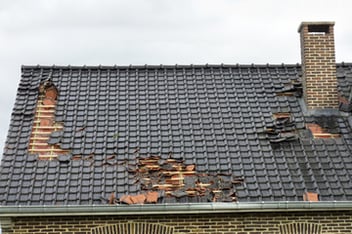A coinsurance clause can be found in a lot of insurance policies, including homeowner’s insurance. In property insurance, the coinsurance clause requires the homeowner to insure the property for a certain percentage of its full value; usually, it is for anywhere between 80 and 100 percent. If a loss occurs, the coinsurance can penalize your loss recovery if the limit you have purchased is not equal to that percentage of the property value.
Coinsurance Formula in Action
You believe your home is worth $100,000 to replace, and your coinsurance is 80 percent, so you insure it for $80,000. You suffer a loss that costs $60,000 in damages; after submitting your claim your insurance company values the home at $150,000. Your insurance company will then divide the $80,000 you purchased by 80 percent of the $150,000 building, which is $120,000; the $40,000 result is what your insurance company will pay. However, if the building had been insured for at least $120,000, your insurance company would have fully covered the loss.
Basically, if the policyholder insures the home for less than the coinsurance clause, they are agreeing to take on part of the risk, making them a “co-insurer” that will share in the costs of the loss. This is intended to encourage homeowners to purchase an adequate amount of coverage for their home, so you do not try to insure the home for an insufficient amount to save money on your premiums.
The Problem with the Coinsurance Clause
One of the big problems with the coinsurance clause is that property value can fluctuate depending on inflation and if you make any home improvements to increase the value. If you complete a project that might make your property value increase, like adding a garage, putting up a fence, or finishing the basement, it is a good idea to have the home appraised again to make sure you have the right amount of insurance coverage.
If you worry about your property value changing without your knowledge, you can have your home appraised more regularly, though you do have to pay for a home appraisal. Some suggest that getting your home appraised once every three years is a good schedule to go by, since that should cover the changes in the real estate market. Take that information to your insurance agent to discuss what changes you may need to make to your current policy.
Fighting a Coinsurance Clause
If you are fighting your insurance company about your coinsurance clause, a public adjuster can be an excellent advocate to help you with your struggle. Insurance agencies frequently face litigation about the coinsurance clause, usually because they failed to advise you on the policy, the appropriate limit for your home, or how the clause affects your claim payments. If you are currently in a dispute then consulting a public adjuster is a great way to help you navigate a messy and complicated ordeal.
Avoiding Coinsurance
Sometimes your insurance company will allow you to have a slightly higher premium and take a stated value or agreed limit policy instead of the coinsurance clause.
There are also some states that have passed statutes that will void the coinsurance on a property insurance policy that is insuring the risks associated with storm damage and fire damage on homes.




 Storm Damage
Storm Damage  Property Damage
Property Damage Appraisal Services
Appraisal Services Contact Us
Contact Us




.jpg)
 claims@ucspa.com
claims@ucspa.com Mon-Fri: 9:00am-5:00pm
Mon-Fri: 9:00am-5:00pm